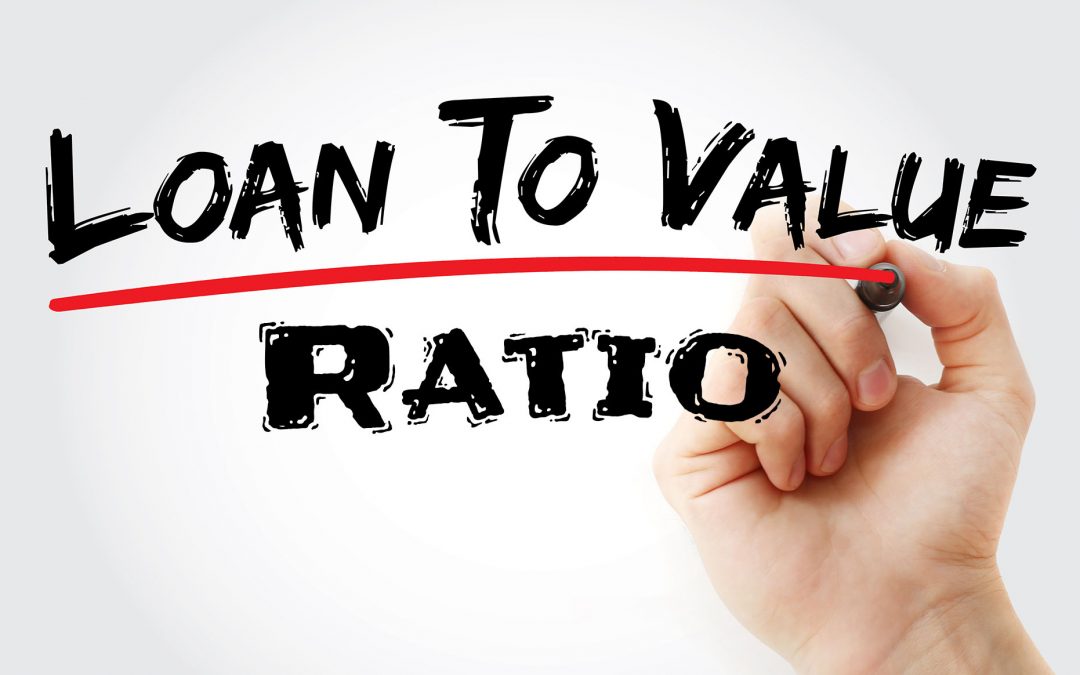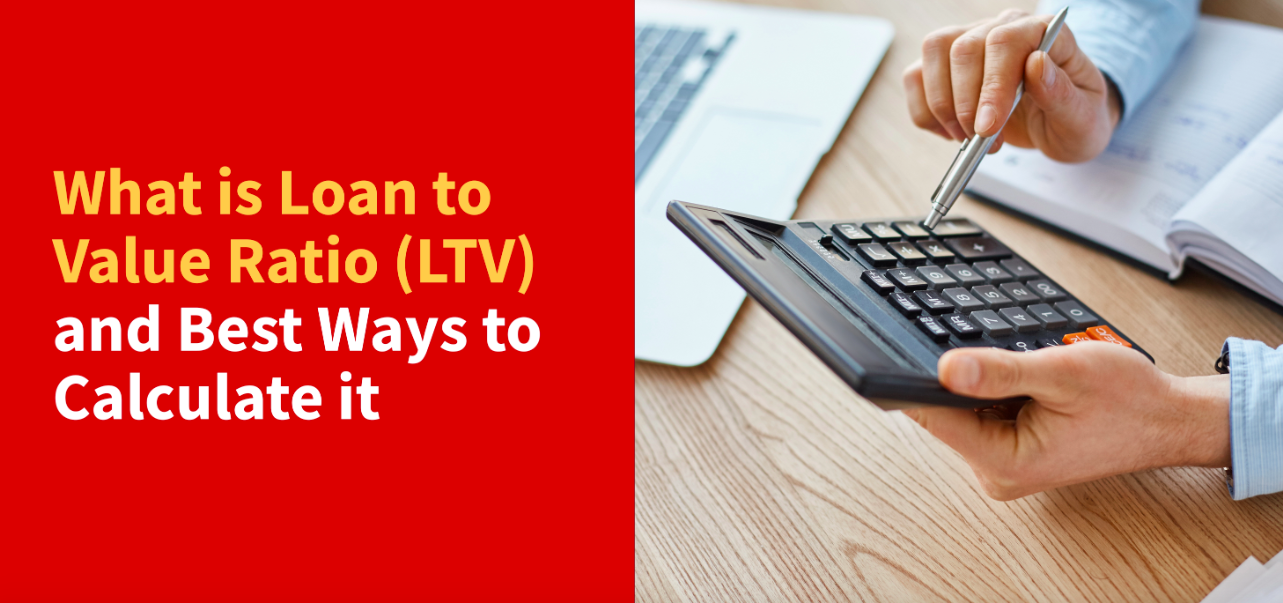The Loan-to-value Ratio (LTV) is used in Mortgage Loan Lending to determine the amount necessary to put down in Down Payment and whether a Lender will extend credit to a borrower. LTV represents the proportion of an asset’s value that a lender is willing to provide debt financing against. The lowest Loan-to-value Ratio (LTV) is better in the eyes of lenders but requires borrowers to come up with larger down payments. The Loan-to-value Ratio (LTV) tends to be higher for assets that are considered more desirable as collateral.
The Loan-to-value Ratio (LTV) is the principal of a Mortgage Loan divided by the value of the property that borrowers are buying, usually expressed as a percentage. LTV is used by lenders to help determine the financial risk of a Mortgage. To find the Loan-to-value Ratio (LTV) of a Mortgage, divide the current balance by the appraised value of the related property and multiply the answer by 100 to get a Percentage. Different mortgage lenders have different criteria for a Loan-to-value Ratio (LTV) of 80% or below. Loan-to-value Ratio (LTV) can apply to any secured loan but is most commonly used with mortgages.
The Loan-to-value Ratio Measures how much debt a borrower uses to finance the asset. It is the percentage of debt compared to the asset’s value, usually expressed as the percentage. Fannie Mae’s HomeReady and Freddie Mac’s Home Possible mortgage programs for low-income borrowers allow a Loan-to-value Ratio (LTV) of 97% but require Private Mortgage Insurance (PMI) until the ratio falls to 80%. The LTV ratio impacts mortgages by influencing Loan Terms, Rate of Interest, and lender risk assessment. The Loan-to-value Ratio (LTV) requirements for the Mortgage depend upon the loan type and borrower’s financial situation.
What Is Loan-to-value Ratio (LTV)?
The Loan-to-value Ratio (LTV) in Real Estate is how much money homebuyers are borrowing (Loan Principal), divided by how much the property they are buying, or its value. The Loan-to-value Ratio (LTV) is usually expressed as a percentage. When a homebuyer tries to apply for a Mortgage, their lender will consider the Loan-to-value Ratio (LTV), whether to approve the loan or not. If they offer a Loan, the lender will also consider the Loan-to-value Ratio (LTV) when determining the loan size and rate of interest.
Determining the Loan-to-value Ratio (LTV) is a critical component of Mortgage Underwriting. It may be used in the process of buying a home, refinancing the current mortgage into a loan, or borrowing against accumulated equity within a property. Loan-to-value Ratio (LTV) is a commonly used ratio that lenders use to assess the risk associated with any loan opportunity. A high Loan-to-value Ratio (LTV) means the loan amount the homebuyer borrows is bigger than the required home loan and lenders might stand to lose more if they default. A lower Loan-to-value Ratio (LTV) implies one can put down money towards the home purchase. To explain the concept in terms of money value derived, the Loan-to-value Ratio (LTV) can be defined as the amount that homebuyers get after dividing the loan amount by the total value of the property.
LTV ratio = Borrowed amount/property value x 100
How Does Loan-to-value Ratio (LTV) Work?
The Lenders consider the Loan-to-value Ratio (LTV) when they evaluate the loan application for secured loans, such as mortgages. When Individuals buy a House they typically put down a percentage of the sale price as a Down payment. If the homebuyers borrow a mortgage loan to pay for the rest, then their lenders will send out an appraiser to determine the value of the property. Once they determine the property value then the Lender will calculate the Loan-to-value Ratio (LTV).
If the borrowers make a down payment of 10% of the home value and borrow the rest then the Mortgage’s Loan-to-value Ratio (LTV) will be 90%. If the borrowers are making a down payment of 20% of the home’s value then Mortgage’s Loan-to-value Ratio (LTV) will be 80%. The higher their Down Payment the Lower their Loan-to-value Ratio (LTV). Homeowners who qualify for special financing including a VA Loan or USDA Loan may qualify for the 0% Down Payment, which means they could take out a Mortgage with a 100% Loan-to-value Ratio (LTV).

How Does Loan-to-value Ratio (LTV) Calculated?
In Order to calculate the Loan-to-value Ratio (LTV), First subtract the Down Payment home’s appraised value. Then Divide that figure by the appraised value and then multiply it by 100. Here is the Formula to Calculate the Loan-to-value Ratio (LTV):
LTV ratio = (Home’s appraised value – down payment) x 100
Another Formula to Calculate the Loan-to-value Ratio (LTV) is:
LTV Ratio = Mortgage Amount/Appraised Property Value
Another Formula to Calculate the Loan-to-value Ratio (LTV) is:
LTV Ratio = (Loan Amount / Asset Value) * 100
What Are the Loan-to-value Ratio (LTV) Requirements?
Here are the Loan-to-value Ratio (LTV) for Different Types of Mortgage Loans:
- Conventional Loan: If the homebuyers make 20% Down Payments they won’t have to pay Private Mortgage Insurance (PMI). It makes 80% the magic number for a Loan-to-value Ratio (LTV). However, most Conventional Mortgage Loans only require a Loan To Value Ratio (LTV) of 97% to qualify.
- FHA Loans: Generally, the Loan-to-value Ratio (LTV) of 96.5% will suffice for the FHA Loans. However, keep in mind that borrowers are required to Pay Mortgage Insurance on FHA Loans, no matter the size of their Down Payments.
- VA Loans: For Service Members, Veterans, or surviving spouses have a 100% Loan-to-value Ratio (LTV) with VA Loans. There is no Down Payment required for the Approval of Loans.
- USDA Loans: The USDA Mortgage Loans are available for low- and moderate-income homebuyers in rural areas. The U.S. Department of Agriculture gives the certain borrowers ability to get approved with a 100% Loan-to-value Ratio (LTV).
- Refinancing: For borrowers who are considering Refinance Mortgage Loans then most lenders want to see a Loan-to-value Ratio (LTV) of 80% or Lower.
How To Lower Loan-to-value Ratio (LTV)?
Here are some easy methods to Lower Loan-to-value Ratio (LTV) and improve Loan Terms:
- Try and make a bigger down payment.
- Pay off debts to boost your credit score.
- Look for a less expensive property.
- If your property’s value increases, think about refinancing.
- Check out special programs for first-time homebuyers.
- Try to negotiate a lower property price with the seller.
Frequently Asked Questions (FAQs)
Question 1: What is a Good Loan-to-value Ratio (LTV)?
Answer: If the borrowers taking out Conventional Mortgage Loans to buy a Home, then the Loan To Value Ratio (LTV) of 80% or less is ideal. However, a conventional mortgage with a Loan-to-value Ratio (LTV) greater than 80% typically requires Private Mortgage Insurance (PMI). Some government-backed mortgage allows borrowers to get away with a very high loan-to-value ratio (LTV).
Question 2: What Is the Combined Loan-to-value Ratio (LTV)?
Answer: Borrowers already have a mortgage and going to apply for a second one then their lenders will consider it the Combined loan-to-value ratio (LTV). If borrowers have a HELOC and want to apply for another loan, then their lender might look at a similar formula called the home equity combined LTV (HCLTV) ratio. This figure represents the total amount of the HELOC against the value of a home, not just what they have drawn from the line of credit.
Question 3: Where is the Loan-to-value Ratio (LTV) Used?
Answer: Banks and Mortgage Lenders commonly use the Loan-to-value Ratio (LTV) when borrowers seek to obtain a loan on the home, such as a mortgage home equity line of credit (HELOC), or home equity loan. For Mortgage Loans, The Banks or Mortgage Lenders will use the Loan-to-value Ratio (LTV) to determine a Loan’s riskiness.
Question 4: What Does a 70% Loan-to-value Ratio (LTV) Mean?
Answer: The 70% Loan-to-value Ratio (LTV) implies that the minimum amount borrowed is equal to 70% of the value of assets. In the case of Mortgage, It would mean that the borrowers have come up with 30% Down Payments and are financing the rest.
Question 5: What Are the Disadvantages of Loan-to-value Ratio (LTV)?
Answer: The Main Drawback of Loan-to-value Ratio (LTV) is that it only includes the Primary Mortgage that a homeowner owes, and does not include in its calculations and other obligations of the borrowers such as second mortgage or home equity Loans.
The Bottom Lines
The Loan-to-value Ratio (LTV) is the most important number to understand if the Borrowers are eligible for a home loan or Not. Having a loan-to-value ratio (LTV) can give access to a wider range of mortgage types and help homebuyers secure a lower interest rate. With a Loan-to-value Ratio (LTV) of 80% or less, homebuyers won’t need to pay private mortgage insurance, which will lower their monthly mortgage payment.
